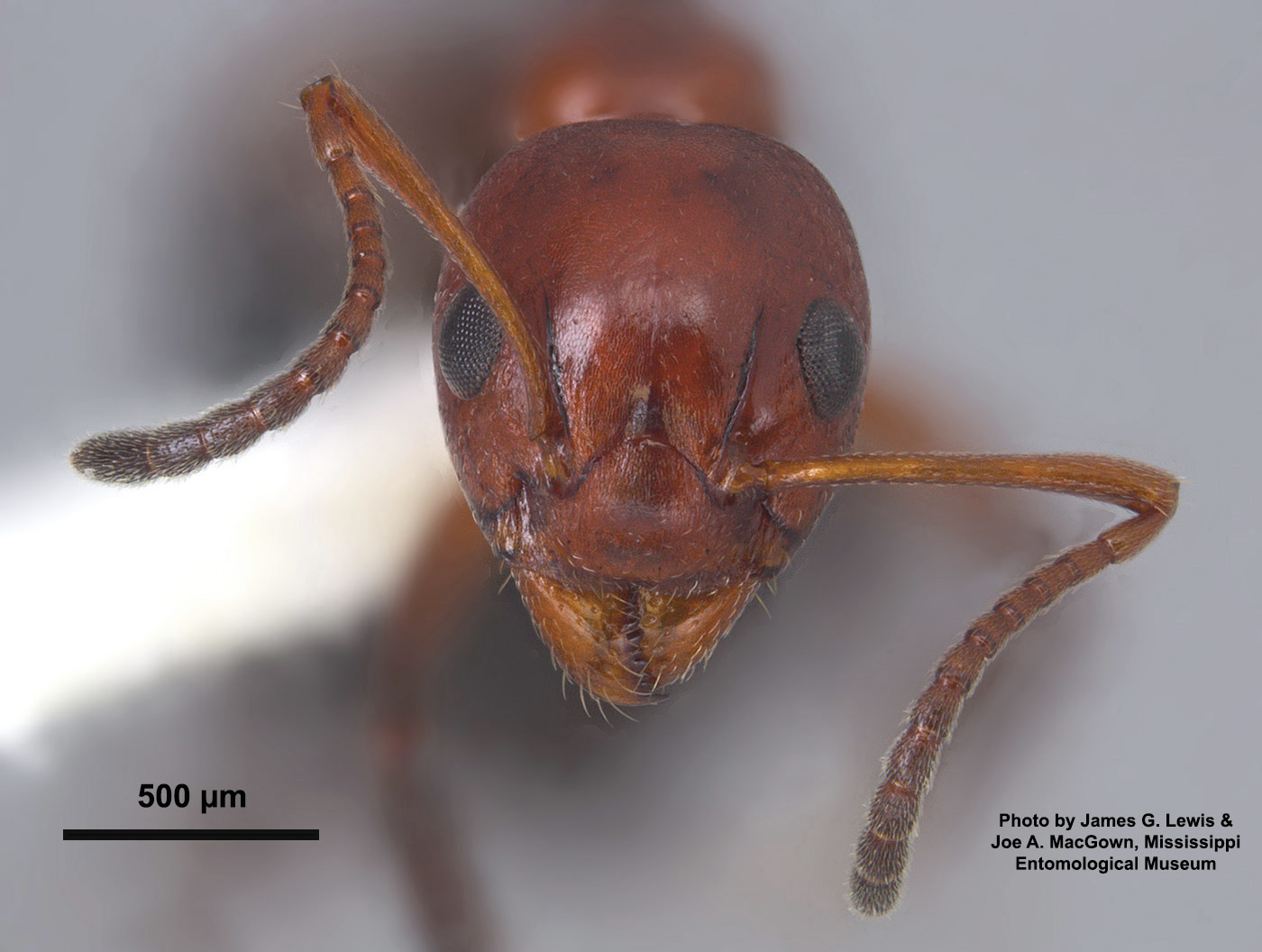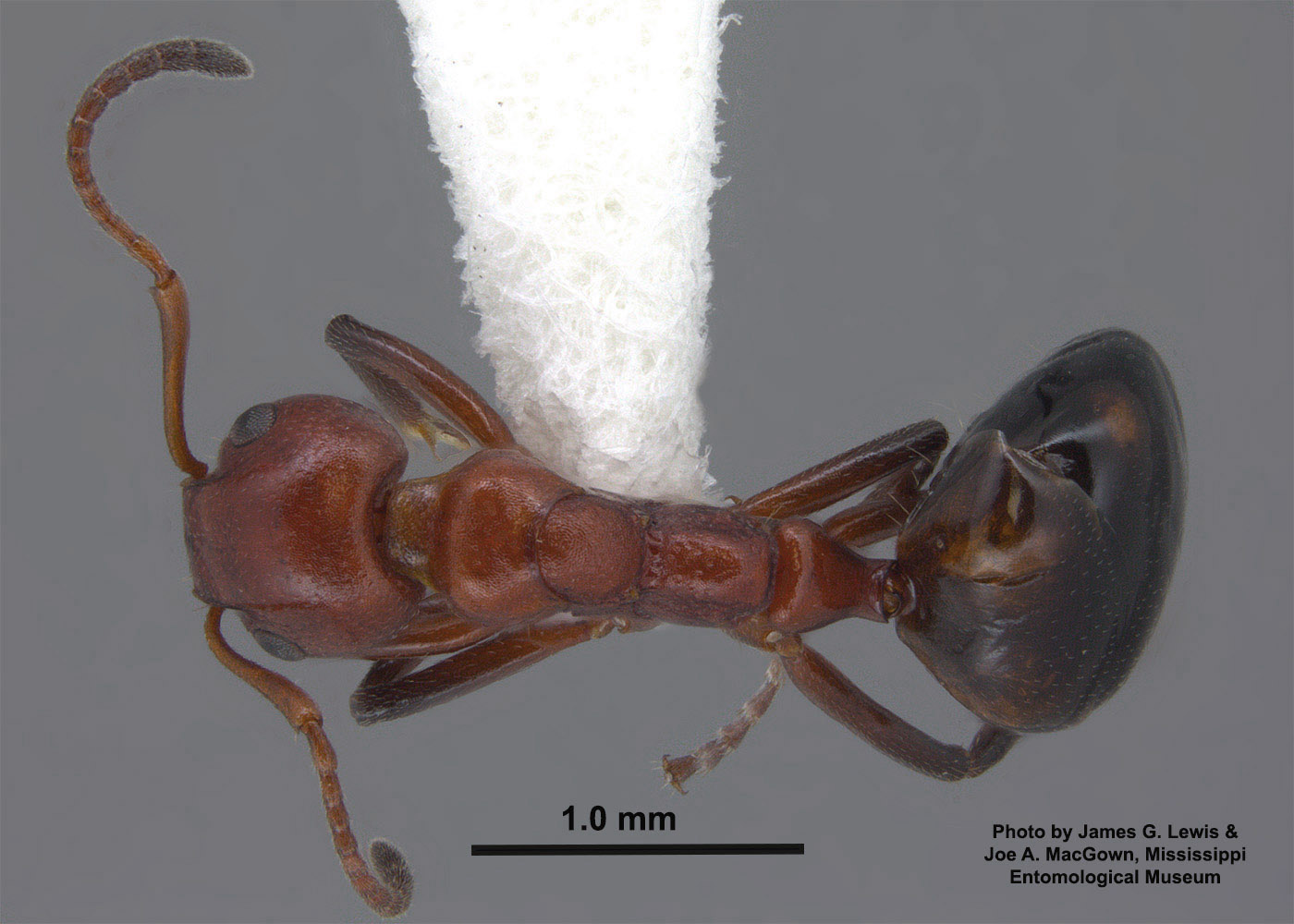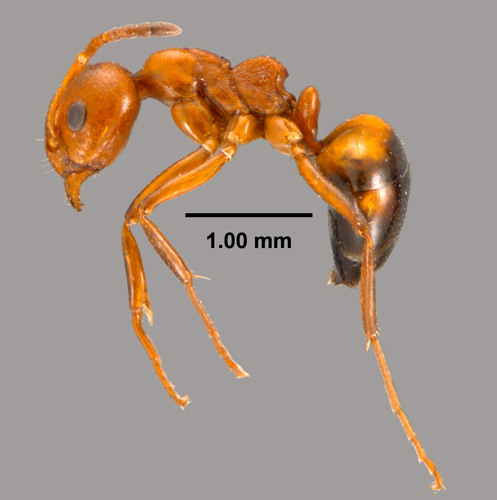Subfamily DOLICHODERINAE By Joe A. MacGown, Uploaded 2009, last updated 2 December 2015 |
||
Dolichoderus mariae, full face view of a worker, Horry Co., SC
(Photo by James Lewis and Joe A. MacGown) |
Dolichoderus mariae, lateral view of a worker, Horry Co., SC
(Photo by James Lewis and Joe A. MacGown) |
Dolichoderus mariae, dorsal view of a worker, Horry Co., SC (Photo by James Lewis and Joe A. MacGown) |
Dolichoderus mariae, side view of a worker, Emanuel Co., GA (Photo by Joe A. MacGown) |
Dolichoderus mariae, side view of a worker Emanuel Co., GA (Photo by Joe A. MacGown) |
|
Introduction Taxonomic History (provided by Barry Bolton, 2015) Identification Biology and Economic Importance Distribution Literature Cited Bolton, B. 2015. An online catalog of the ants of the world. Online at: http://antcat.org. Accessed 1 December 2015. Creighton, W. S. 1950. The ants of North America. Bulletin of the Museum of Comparative Zoology 104:1-585. Emery, C. 1894. Studi sulle formiche della fauna neotropica. VI-XVI. Bullettino della Società Entomologica Italiana 26:137-241. MacKay, W. P. 1993. A review of the New World ants of the genus Dolichoderus (Hymenoptera: Formicidae). Sociobiology 22:1-148. Mayr, G. 1886d. Die Formiciden der Vereinigten Staaten von Nordamerika. Verhandlungen der Kaiserlich-Königlichen Zoologisch-Botanischen Gesellschaft in Wien 36:419-464. Smith, D. R. 1979. Superfamily Formicoidea. Pp. 1323-1467 in: Krombein, K. V.; Hurd, P. D.; Smith, D. R.; Burks, B. D. (eds.) 1979. Catalog of Hymenoptera in America north of Mexico. Volume 2. Apocrita (Aculeata). Washington, D.C.: Smithsonian Institution Press, pp. i-xvi, 1199-2209. Shattuck, S. O. 1994. Taxonomic catalog of the ant subfamilies Aneuretinae and Dolichoderinae (Hymenoptera: Formicidae). University of California Publications in Entomology 112:i-xix, 1-241. Wheeler, W. M. 1905. The North American ants of the genus Dolichoderus. Bulletin of the American Museum of Natural History 21:305-319. Wheeler, G. C.; Wheeler, J. 1966. Ant larva of the subfamily Dolichoderinae: supplement. Annals of the Entomological Society of America 59:726-732. Links |
||







